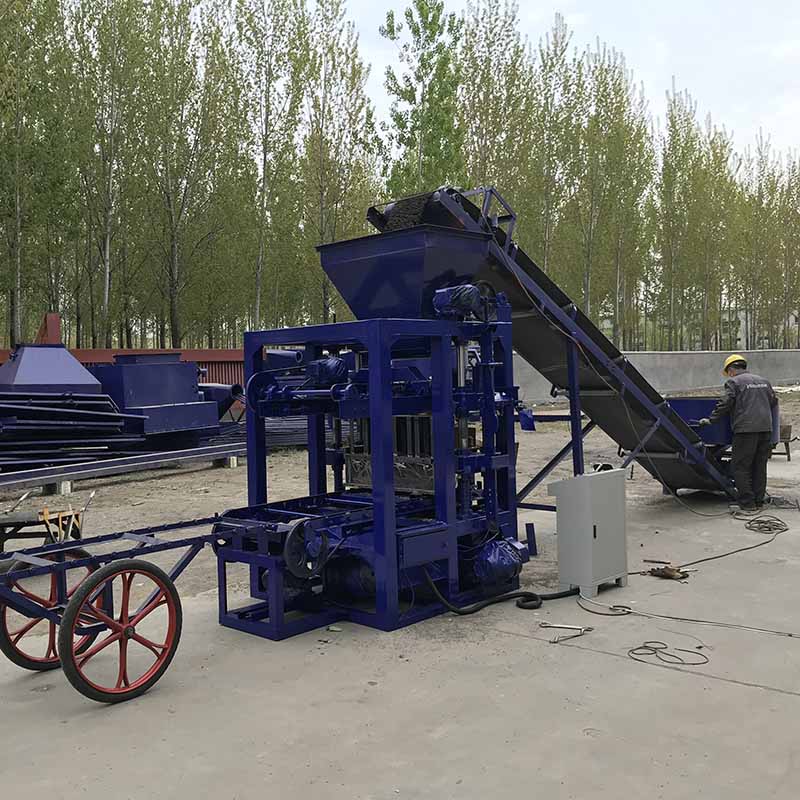
Image source:Aiwei block machine
Sustainability has become a central concern in the construction industry, prompting a shift towards more eco-friendly building practices. Hollow block production, a fundamental aspect of construction, has also embraced sustainability. In this article, we delve into sustainable hollow block production, exploring the various facets of this important transformation in the construction sector.
Introduction
Hollow blocks, also known as concrete masonry units (CMUs) or cinder blocks, have been a staple in construction for decades due to their durability, insulation properties, and versatility. However, the traditional production of hollow blocks often involved resource-intensive and environmentally damaging practices. Sustainable hollow block production seeks to address these challenges and create a more responsible approach to manufacturing these essential building components.
Sustainable Practices in Hollow Block Production
1. Use of Recycled Materials
One of the key principles of sustainability in hollow block production is the incorporation of recycled materials into the block mix. Recycled aggregates, such as crushed concrete or reclaimed bricks, can replace a portion of the traditional raw materials like sand and gravel. This reduces the demand for virgin resources, lowers waste, and minimizes the environmental footprint of production.
2. Efficient Energy Usage
Sustainable hollow block production emphasizes energy efficiency. Modern hollow block machines are equipped with energy-efficient motors and components that reduce overall energy consumption. Additionally, some machines utilize innovative curing techniques that require less energy while still ensuring the proper strength and durability of the blocks.
3. Waste Reduction and Management
Sustainable practices in hollow block production aim to minimize waste throughout the manufacturing process. This includes optimizing the production process to reduce the generation of unusable or defective blocks and implementing effective waste management strategies.
Eco-Friendly Block Designs
1. Enhanced Insulation
Sustainability in construction extends beyond the manufacturing process to the performance of the blocks in buildings. Many sustainable hollow block designs focus on improved insulation properties. Blocks with better insulation reduce heating and cooling energy requirements in structures, contributing to long-term energy savings and reduced greenhouse gas emissions.
2. Water-Permeable Blocks
In regions with high rainfall, sustainable block designs may incorporate water-permeable features. These blocks allow rainwater to pass through, reducing the risk of flooding and enhancing groundwater recharge. Such designs are particularly relevant in sustainable urban drainage systems.
Quality Control and Durability
Sustainable hollow block production places a strong emphasis on quality control. High-quality blocks are more durable and have a longer lifespan, reducing the need for replacements and repairs, which can be resource-intensive.
1. Real-time Monitoring
Advanced hollow block machines are equipped with sensors and monitoring systems that continuously assess the quality of blocks during production. Any deviations from quality standards can be identified and corrected in real-time.
2. Customizable Block Properties
Sustainable hollow block production allows for the customization of block properties to meet specific project requirements. This ensures that the blocks are tailored to the intended application, optimizing both resource use and performance.
Environmental Certifications
Sustainable hollow block production often involves obtaining environmental certifications for the manufacturing process and the final product. Certifications such as LEED (Leadership in Energy and Environmental Design) or BREEAM (Building Research Establishment Environmental Assessment Method) can validate the sustainability claims of the manufacturer and contribute to green building projects.
Case Studies: Sustainable Hollow Block Production
1. India’s Green Hollow Blocks
In India, several manufacturers have adopted sustainable practices in hollow block production. They use recycled materials and implement energy-efficient processes. These eco-friendly hollow blocks are in high demand, especially in green building projects, where sustainability is a primary consideration.
2. Germany’s Insulated Blocks
In Germany, manufacturers have developed hollow blocks with exceptional insulation properties. These blocks contribute to the energy-efficient construction of residential and commercial buildings, reducing heating and cooling costs.
3. Kenya’s Water-Permeable Blocks
In Kenya, hollow block manufacturers have introduced water-permeable block designs to combat urban flooding. These blocks are becoming a vital component of sustainable urban drainage systems in rapidly growing cities.
Conclusion
Sustainable hollow block production represents a significant shift in the construction industry towards more responsible and eco-friendly practices. By incorporating recycled materials, optimizing energy usage, reducing waste, and enhancing block designs, manufacturers are contributing to a greener and more sustainable future for construction.
As global awareness of environmental issues grows, sustainable hollow block production is likely to become the standard rather than the exception. Builders, architects, and developers are increasingly seeking sustainable building materials, and sustainable hollow blocks align with these demands. Ultimately, sustainable hollow block production is not just an industry trend; it’s a vital step towards a more sustainable and resilient built environment.
